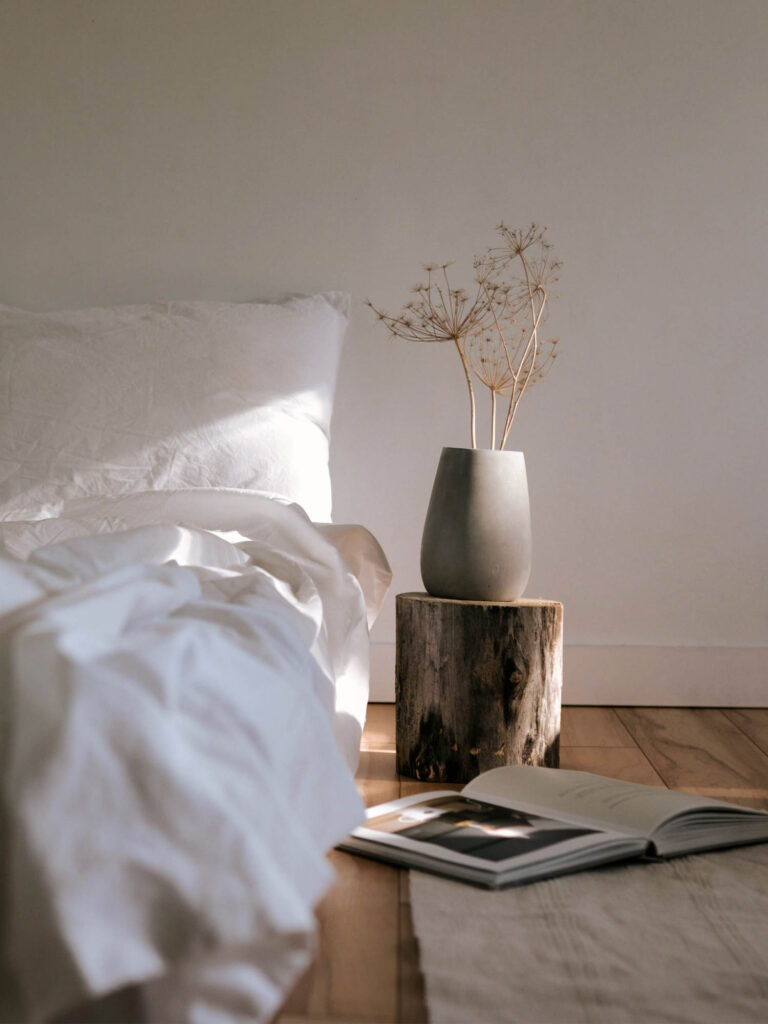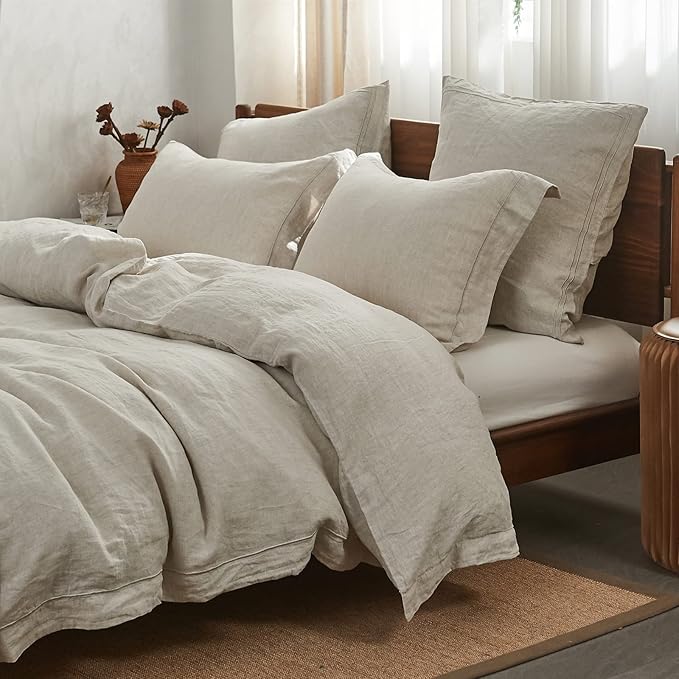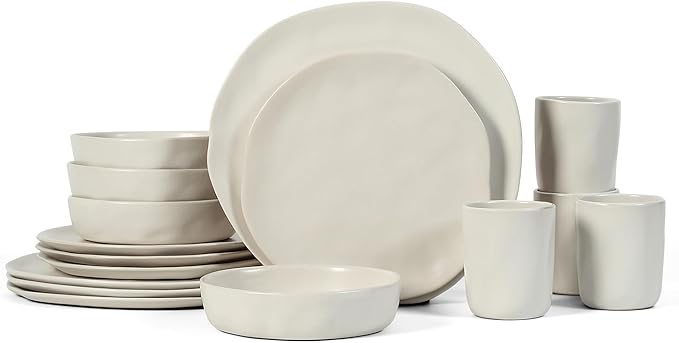The Japandi design style, a seamless fusion of Japanese and Scandinavian aesthetics, continues to gain momentum as a top interior design trend for 2024. This unique style merges the minimalist elegance of Japanese design with the cozy functionality of Scandinavian decor, creating spaces that exude calmness, simplicity, and warmth. In this blog post, we’ll explore how to incorporate Japandi design trends into your home, offering practical tips and inspiration for embracing this timeless aesthetic.

This post may contain affiliate links, meaning I could earn a small commission if you make a purchase through my link, at no extra cost to you. You can read my full disclosure here. Thank you for supporting Alagu Home!
What is Japandi Design?
Japandi design is a hybrid style that combines the best of Japanese and Scandinavian design principles. Rooted in minimalism, Japandi emphasizes clean lines, natural materials, and a neutral color palette. The result is a space that feels both serene and inviting, where every element serves a purpose, and clutter is minimized. In 2024, Japandi is evolving to include even more sustainable and organic elements, reflecting a growing interest in eco-friendly living.
Key Elements of Japandi Design
- Neutral Color Palettes: The foundation of Japandi design is its use of neutral colors, such as soft whites, earthy beiges, and muted grays. These tones create a calming backdrop that allows the beauty of natural materials to shine. In 2024, expect to see more warm, earthy tones like clay, terracotta, and olive green, adding depth and richness to the neutral palette.
- Natural Materials: Japandi design embraces the use of natural materials, including wood, stone, and bamboo. These elements bring warmth and texture to the space while reinforcing the connection to nature. Light-colored woods like birch and oak are popular choices, as they complement the neutral color scheme and add a sense of lightness to the room.
- Functional Furniture: In Japandi interiors, furniture is both functional and aesthetically pleasing. Pieces are often low-profile, with clean lines and simple silhouettes. Scandinavian-inspired furniture, known for its functionality and comfort, pairs beautifully with Japanese-style pieces, which emphasize craftsmanship and understated elegance. Multifunctional furniture, such as storage benches or modular shelving units, is also a key component of Japandi design, reflecting the style’s focus on practicality.
- Minimalist Decor: Japandi spaces are uncluttered and thoughtfully curated. Decorative items are kept to a minimum, with each piece chosen for its beauty and purpose. Instead of filling a room with accessories, focus on a few statement pieces, such as a handcrafted vase or a piece of abstract art, that resonate with the overall aesthetic. Plants, particularly those with clean lines and sculptural qualities, are also a popular addition, bringing a touch of nature indoors.
- Sustainable Living: As sustainability becomes increasingly important in interior design, Japandi is leading the way with its emphasis on eco-friendly materials and practices. In 2024, look for sustainable choices like reclaimed wood, organic textiles, and energy-efficient lighting. This commitment to sustainability aligns with the minimalist ethos of Japandi.
Keep reading to discover more tips and inspiration for incorporating the latest Japandi design trends into your home.
How to Incorporate Japandi Design into Your Home
To incorporate Japandi design into your home, start by establishing a neutral base. Selecting a neutral color palette for your walls, floors, and larger furniture pieces is essential. Opt for shades that promote a sense of calm, allowing natural materials to become focal points in your decor. This approach sets a serene backdrop that enhances the overall aesthetic of your space.
Next, focus on quality over quantity. Invest in a few high-quality, functional furniture pieces that are built to last. Choose designs that are simple, timeless, and crafted from natural materials. This emphasis on durability and craftsmanship ensures that your furniture will not only complement the Japandi style but also provide lasting value.
Embracing minimalism is another key aspect of Japandi design. Declutter your space and adopt a less-is-more approach to decor. Carefully curate your accessories, selecting items that are both meaningful and contribute to the overall aesthetic. This minimalist approach helps maintain the serene and uncluttered feel characteristic of Japandi interiors.
Incorporate natural elements to further enhance your Japandi-inspired home. Bring nature indoors with materials such as wood, stone, and linen. Adding plants to your space can also strengthen the connection to the outdoors, introducing a touch of organic beauty and vitality.
Finally, prioritize sustainability in your design choices. Opt for sustainable materials and products whenever possible. Consider furniture made from reclaimed wood, eco-friendly paints, and energy-efficient lighting solutions. This commitment to sustainability not only aligns with Japandi’s minimalist ethos but also supports a more mindful and eco-conscious lifestyle.

The Future of Japandi Design in 2024
Japandi design is expected to continue evolving, with a greater focus on personalization and sustainability. The style’s emphasis on simplicity will remain central, but we may see more variations in color palettes and material choices. Whether you’re looking to completely redesign your home or simply refresh a room, Japandi offers a timeless approach that will continue to inspire and delight.
By embracing Japandi design trends in 2024, you can create a home that is not only beautiful but also a sanctuary of calm and comfort. This harmonious blend of influences offers a perfect balance of form and function, making it an ideal choice for modern living.










